Photographing music festivals can be a massive challenge. You need to move rapidly between multiple locations, combat extreme variations in lighting and, to top it all off, you may even have to share your images on the go.
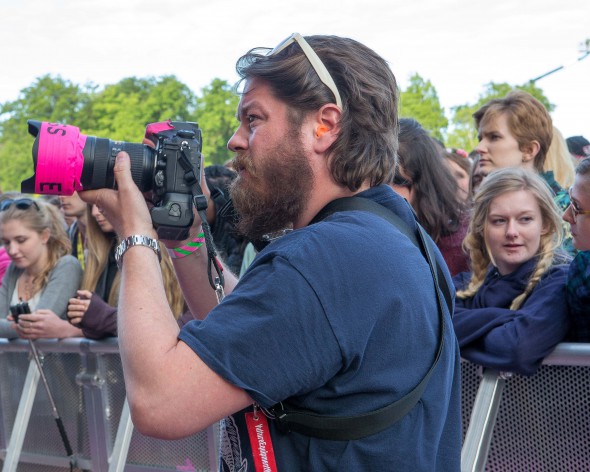
Paul Bayfield at work
This short guide offers a few pointers on how to deal with festival-photography issues and get through the experience in one piece. But let’s start with the basics; every single item in your kit bag is there for a reason, so make sure you do your prep.
1. The Set-up
I always operate on a two-camera system: a Nikon D4s and a D810. On the front of my D4s is a Nikon 70-200 2.8. This lens is legendary and perfect for low-light situations. It’s very fast and, over the years, has taken a beating like you wouldn’t believe. It’s my single go-to lens for shooting festivals. On the D810 is a Nikon 14-24 2.8. The latter is perfect when you are in the pit close to stage and really want those big wide shots. With the resolution of the D810, I can pull closer crops as if I were using the 24-70 2.8.
There’s nothing worse than constantly pulling up slipping camera straps and getting uncomfortable when you’re trying to shoot. I’ve tried a lot of different rigging in my time but the best things I’ve found for the job are a couple of straps by Vulture Equipment Works. I use an A4 and an A2. These things are made from parachute rigging so they are lightweight, comfortable and very strong.
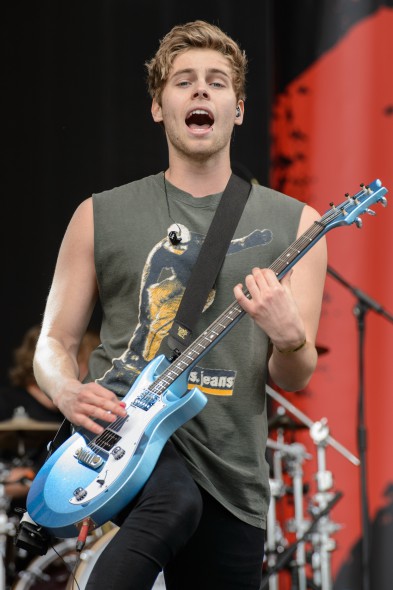
Luke Hemmings, 5 Seconds of Summer
Plenty of memory is key. Fancy little memory card cases are pretty but pointless in my opinion; I prefer to keep two spare CF & XQD cards in my back right-hand pocket as I always know where they are and they’re always ready to go.
When I get to the press tent, the first thing I do is get the laptop up and running, open up my FTP uploader and make sure I’ve got a good connection to the paper or magazine for which I’m shooting. Get Lightroom open and send a test image across; it’s one less thing to worry about when you come back with your first batch of photographs.
It’s also a good idea to set out a hit list of bands you want to shoot – not just the ones you like but the acts that are hot right now. These images aren’t just valuable for press but you will get a lot of attention on your own social media. For these shot especially, try to get eye contact to form a connection to that huge fan-base.
2. Relevance
Find relevance to your readership when shooting. A shot of Snoop swinging his bling around his neck is great but a crisp, clean shot of him in the local football team’s colours will draw more attention from the readers and may even score you a front cover.
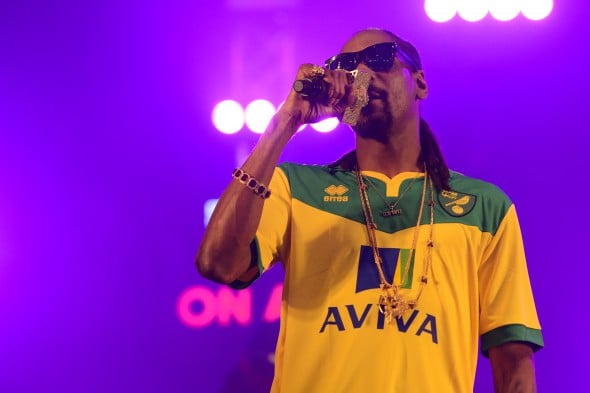
Snoop Dogg Live at BBC Radio 1 Big Weekend in Norwich
3. Know Your Fashion
The crossover with music and fashion right now is as strong as it’s ever been. You’re more likely to see images of Rita Ora and Ella Eyre in fashion glossies than music magazines. If you are working for an agency then you will find these images get bought up fast and by the bucket load. Find out what labels they are wearing and they will circulate more than any of your other images.
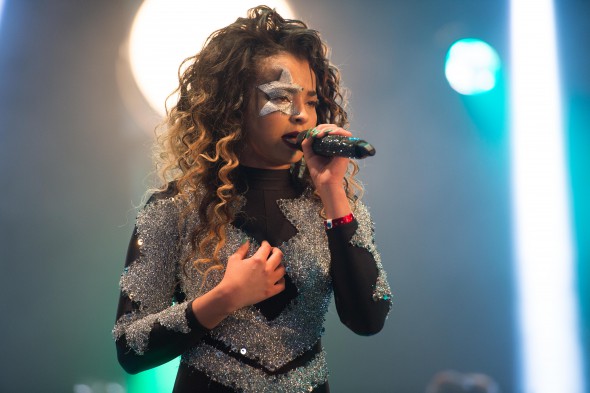
Ella Eyre grabs the column inches for her style as much as her music
5. Metering
I’ve said it before and I’ll say it again, spot metering on your subject’s face when you’re surrounded by high-intensity stage lighting is the perfect way to get good exposures. Modern stage lighting is usually LED based, and it’s bloody horrible, with harsh direct light and defined fall-off areas that almost go from too bright to total darkness. Spot metering will help you avoid blown-out skin and will keep those colours from over-saturating.
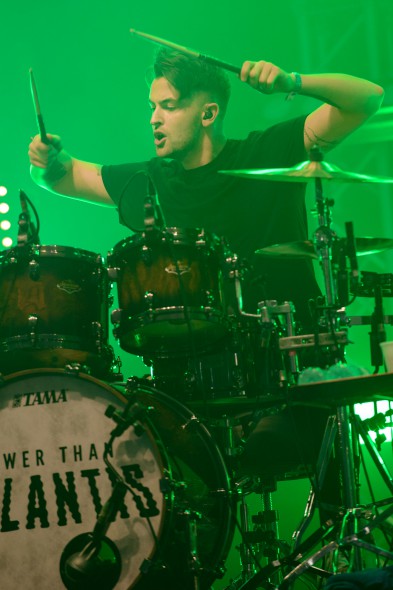
Lower than Atlantis at BBC Radio 1 Live Lounge
6. Creative Angles
There may be a lot of other photographers around you so try to find your own angle. If I find myself in a pack I will swiftly move elsewhere. This can help you find a unique perspective that won’t be repeated in other publications. You don’t always have to be shooting directly in to stage and you will come away with shots that capture a different feel to the moment you are all shooting.
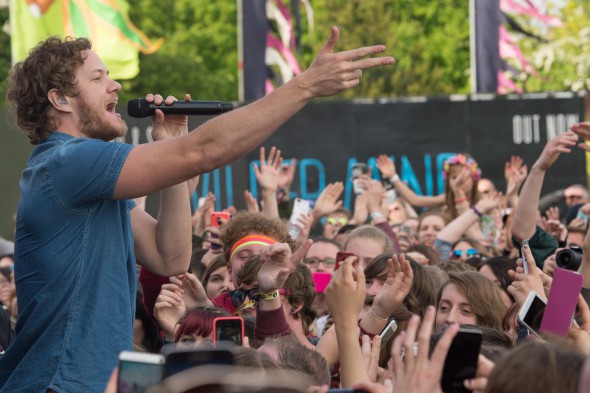
Dan Reynolds of Imagine Dragons amidst a festival crowd
7. Shot Economy
Be patient and choose your moments. It’s easy to rattle off shots but that gives you so much more work back at the press tent and you may end up not getting time to search through all the images for that perfect shot. Anticipate your subject’s movements and you can come away with a handful of special ones. While with the Darkness at a festival in France, I was looking through the viewfinder and could see front-man Justin start to make a run across stage. Expecting a jump, I took a knee to get a perspective of height and fired a shot.
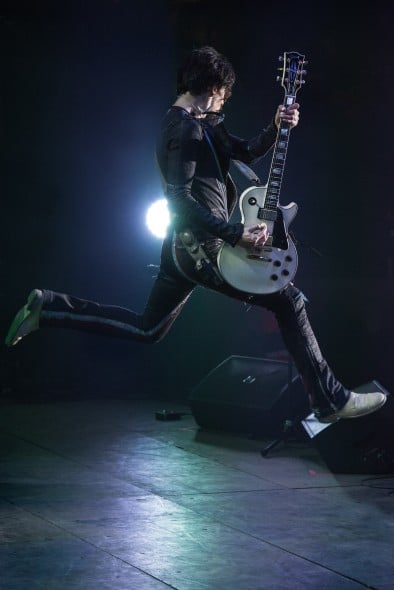
Justin Hawkins of the Darkness mid-jump at HOG Festival
8. Capture the Crowd
Pay attention to the crowd. If the sun pops out and you get up on the barrier wall, you can often get great shots of the fans in full swing. This is great texture-filler for your publications. I carry an ND filter loose in my back-left pocket and quickly hold it in front of the lens to bring out the blues in the sky.
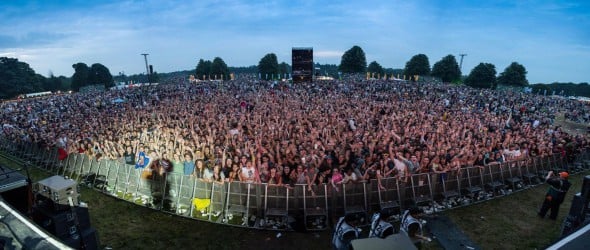
9. Backlighting
When night falls, things get more difficult; more often than not, there will be strong back lighting from the stage. However, you can use that light to your advantage. Getting yourself in to a position with a strong light source behind your subject creates a great edge light. You can lean left and right to pull a little lens flair out from behind the performer.
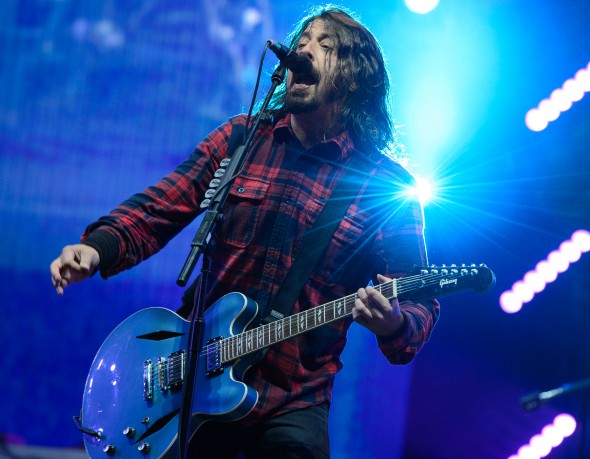
Dave Grohl of Foo Fighters performs at BBC Radio 1 Big Weekend
10. Looking After Number One
TAKE A BREAK! Find an act that you are comfortable skipping – the world can survive without another shot of Olly Murs. If you are not careful while shooting a summer festival, you can get dehydrated very quickly. Take the time to sit down, take on water and food, call your editor for a pat on the back and make sure your photographs are getting through the wire properly. You’ll thank yourself for it later when you are waiting in the cold for the headline act to walk on stage.
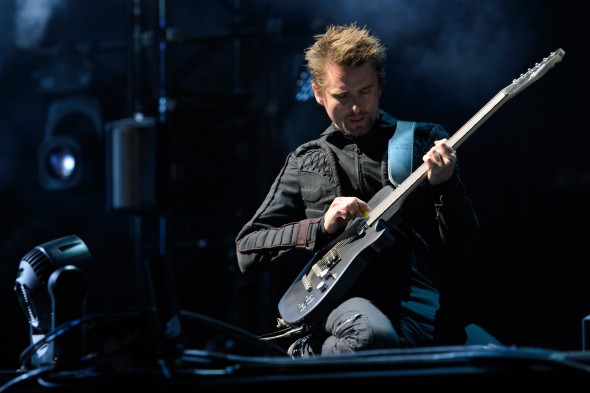
Muse live at BBC Radio 1 Big Weekend
11. Deliver and Get Paid
Most press deadlines are 10:30pm; most headline acts come on stage at 10pm and are often late. See where I’m going with this? Make a solid plan. Prepare your folders to receive the shots you are going to import once you’re back from the stage. Have your captions and titles typed out on a text document open on your desktop so you can copy and paste them in. When shooting, be selective and find the key moments; you don’t want to be coming back with a hundred shots to sift through or you’ll never hit that deadline. Import only the handful you need, the hero shots.
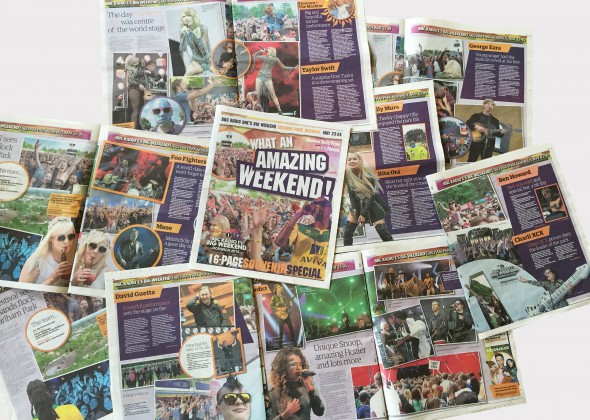
About the Author
Paul Bayfield is a professional photographer, specialising in music and editorial photography. You can view more of his work on his website and follow him on Twitter.

